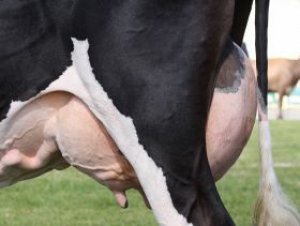Dairy farming

The joint presentation began with the impasse in Congress, where representatives failed to pass a new Farm Bill before the old law expired on September 30. NMPF’s dairy policy reform package, initially known as Foundation for the Future, had come a long way before being introduced in Congress last fall as the Dairy Security Act (DSA).
“The DSA was included by the members of the Senate Agriculture Committee in the draft Farm Bill approved last spring,” Mr Kozak explained. “Subsequently, the entire Senate approved a Farm Bill containing the DSA. Then, the House Agriculture Committee approved its own version of the Farm Bill earlier this summer.”
Despite this support, and NMPF’s success in defeating challenges to the DSA (like the Goodlatte amendment, which would have stripped the market stabilization plan from the program), the Farm Bill was not brought to a vote by the full House.
“The House of Representatives has punted on the entire Farm Bill,” Mr Mooney said. “The House Ag Committee did its job and passed by a wide, bipartisan margin a Farm Bill back in July. There was enough time for the full House to act on the bill…but they didn’t.”
With the expiration of the old Farm Bill, NMPF has been increasing pressure on Congress and urging its member cooperatives and farmers to ask their representatives for a “Farm Bill Now” when Congress returns after the elections.
“If the question in Washington is how to reform government programs and make them more effective, we have an answer: pass the 2012 Farm Bill. By not acting on this measure, Congress actually increases federal spending next year,” Mr Mooney stated.
NMPF’s leaders went on to discuss other priority issues that the organisation had dealt with in the past year. Participation in the National Dairy FARM (Farmers Assuring Responsible Management) Program has continued to increase, but more farms, co-ops, and companies are still needed. The program recently launched a “See It, Stop It” campaign that encourages workers to share information about potentially problematic animal care practices with farm management.
Although there weren’t any new trade deals completed or signed in 2012, NMPF has been working with industry partners like the US Dairy Export Council and the Consortium for Common Food Names to represent dairy farmer interests in negotiations for the Trans-Pacific Partnership Free Trade Agreement and Geographic Indications. The voluntary, dairy farmer-funded Cooperatives Working Together program has helped export the equivalent of 2.2 billion pounds of milk, or 60 per cent of the increase in 2012 milk production, to buyers overseas.
In March 2012, NMPF was given the opportunity to manage the REAL® Seal program. “The REAL® Seal gives us the opportunity…to distinguish between products made from real milk, and those that are either imported or not made from milk at all,” Mr Kozak said. Although the symbol is already recognized by nine out of ten consumers and used by 360 food companies, NMPF’s leaders stressed that there is more work to be done to build additional awareness of how the icon can help sell dairy products.
The joint presentation concluded with Mr Mooney and Mr Kozak emphasising the proactive attitude the organization assumed throughout the year, partly because “we face a future of reduced government support on the one hand, and more government intrusion on the other,” Mr Mooney explained.
“The best way to deal with that future is being proactive, always doing the right things, and most importantly, taking care of our own,” Mr Kozak added.





















